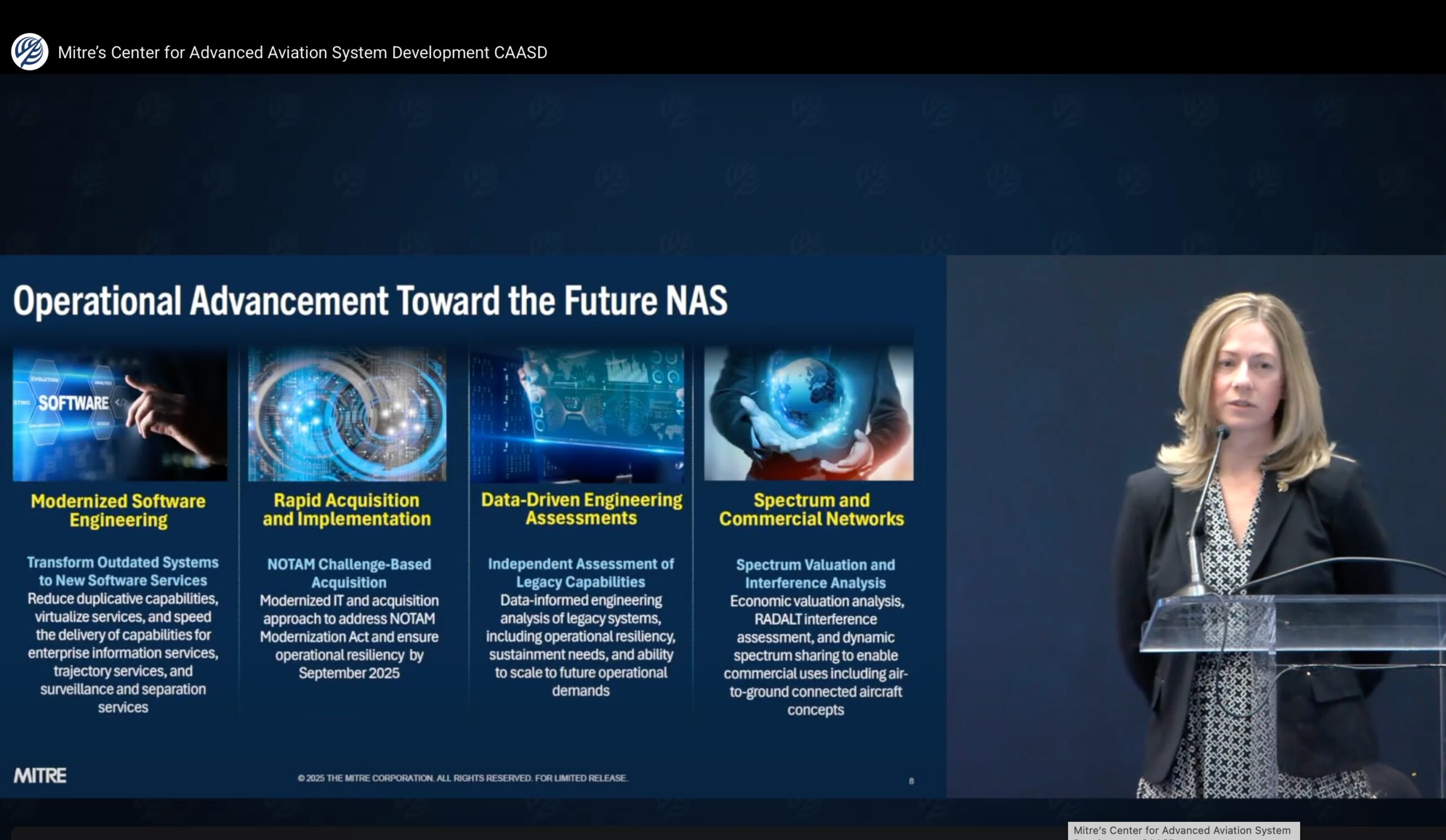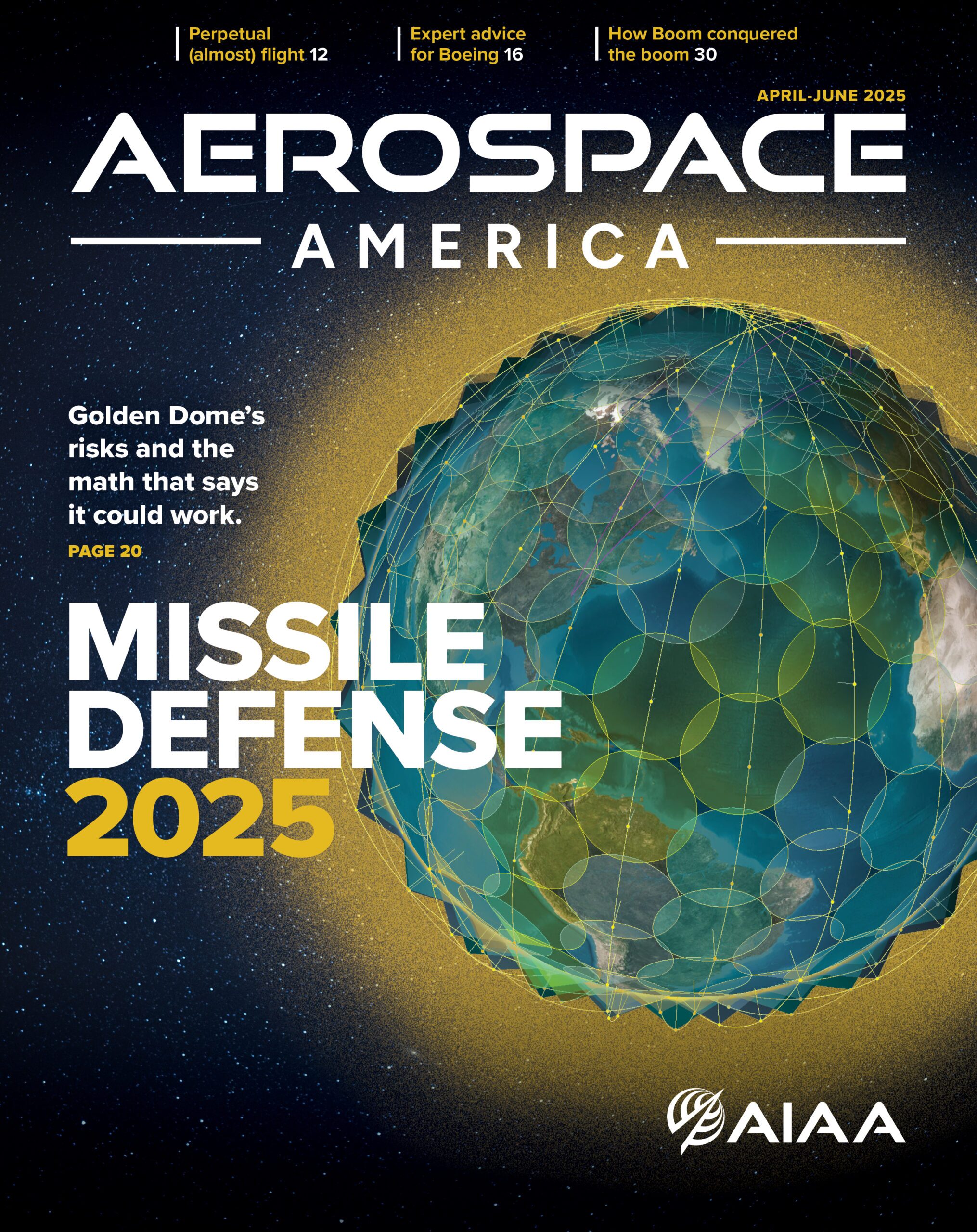Federally funded R&D Research Centers, or FFRDCs, supply federal agencies with objective data, engineering expertise, and systems-level solutions without competing commercially. MITRE’s Center for Advanced Aviation System Development (CAASD), an FFRDC dedicated to the FAA, provides advice and technical expertise to improve the safety, security, and efficiency of the National Airspace System.
Attendees at a Hub session at AIAA AVIATION Forum and ASCEND in July learned about all that the CAASD does and how it provides impartial, nonprofit research and systems engineering to keep America’s skies safe and efficient.
“We don’t build products. We don’t sell things for a profit but instead are providing that objective data to support the American public,” said Lesley Weitz, Senior Principal Aerospace Engineer and Department Chief Scientist at The MITRE Corp., who presented the mission of the CAASD on the Hub stage.
CAASD is one of six FFRDCs that MITRE operates—others include centers focused on national security, enterprise modernization, homeland security, health, and cybersecurity. By drawing on expertise across these centers, MITRE applies lessons learned and best practices—ranging from acquisition management to agile software development—to address shared challenges across government agencies, Weitz noted.
In aviation, its three core focus areas are:
- Safety assurance
- Airspace efficiency
- Driving the future next-gen environment
In an informative explanation, Weitz expanded on how each can help drive aviation toward the future. On the safety front, the center is refining ASIAS (Aviation Safety Information Analysis and Sharing) into version 3.0 with real-time data access and AI-driven alerts, accelerating certification of advanced air mobility and space launch vehicles, and modernizing pilot medical records.
To boost efficiency, CAASD automates instrument procedure maintenance while weeding out rarely used approaches, enhances scheduling in busy corridors, and applies natural language processing to FAA Command Center voice communications. Workforce readiness is another priority, Weitz added, using data-driven staffing models and innovative training techniques to shorten controller certification timelines.
Weitz also presented a cogent history of the center. Although CAASD itself was formally chartered in 1990, MITRE’s aviation support dates back to the late 1950s.
Early in its history, CAASD led the development of the Traffic Collision Avoidance System (TCAS) standards and built the first automated traffic flow management tools to handle weather disruptions and congestion. In the late 1990s, the center advanced free-flight concepts for oceanic air traffic control, helping to automate procedures and communication over the high seas, Weitz explained.
In toto, the historical achievements are extremely vital to what now makes up the nation’s aviation systems. Today, the center has focused on integrating new entrants—UAS, urban air taxis, and commercial space launches—into legacy systems. A recent “challenge-based acquisition” for the Notice to Air Missions (NOTAM) system—accelerated by a single-point-of-failure outage—demonstrates a new, vendor-friendly approach.
Internationally, CAASD has partnered with more than 55 sponsors—Asia-Pacific offices, South Korea’s urban air mobility studies, and state-level roadmaps for rural connectivity and medevac use cases, Weitz said. Lately, CAASD is expanding into multimodal transportation for U.S. Department of Transportation: sharing aviation’s safety-data methods across rail, transit, and automotive sectors and building resilient, climate-aware recovery plans.
Weitz concluded that CAASD’s data-driven, cross-cutting research powered by MITRE’s expertise is working to safely modernize and future-proof the national and global airspace.




